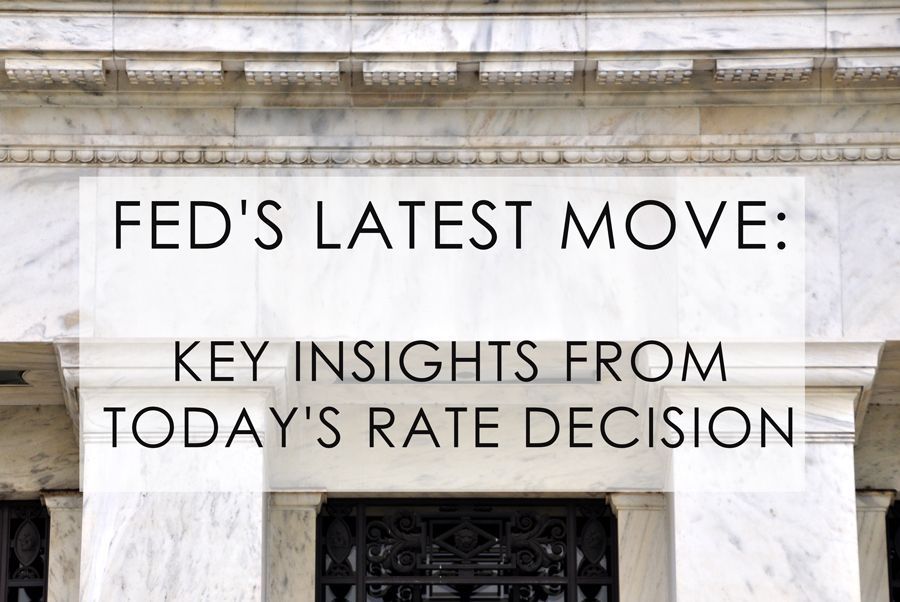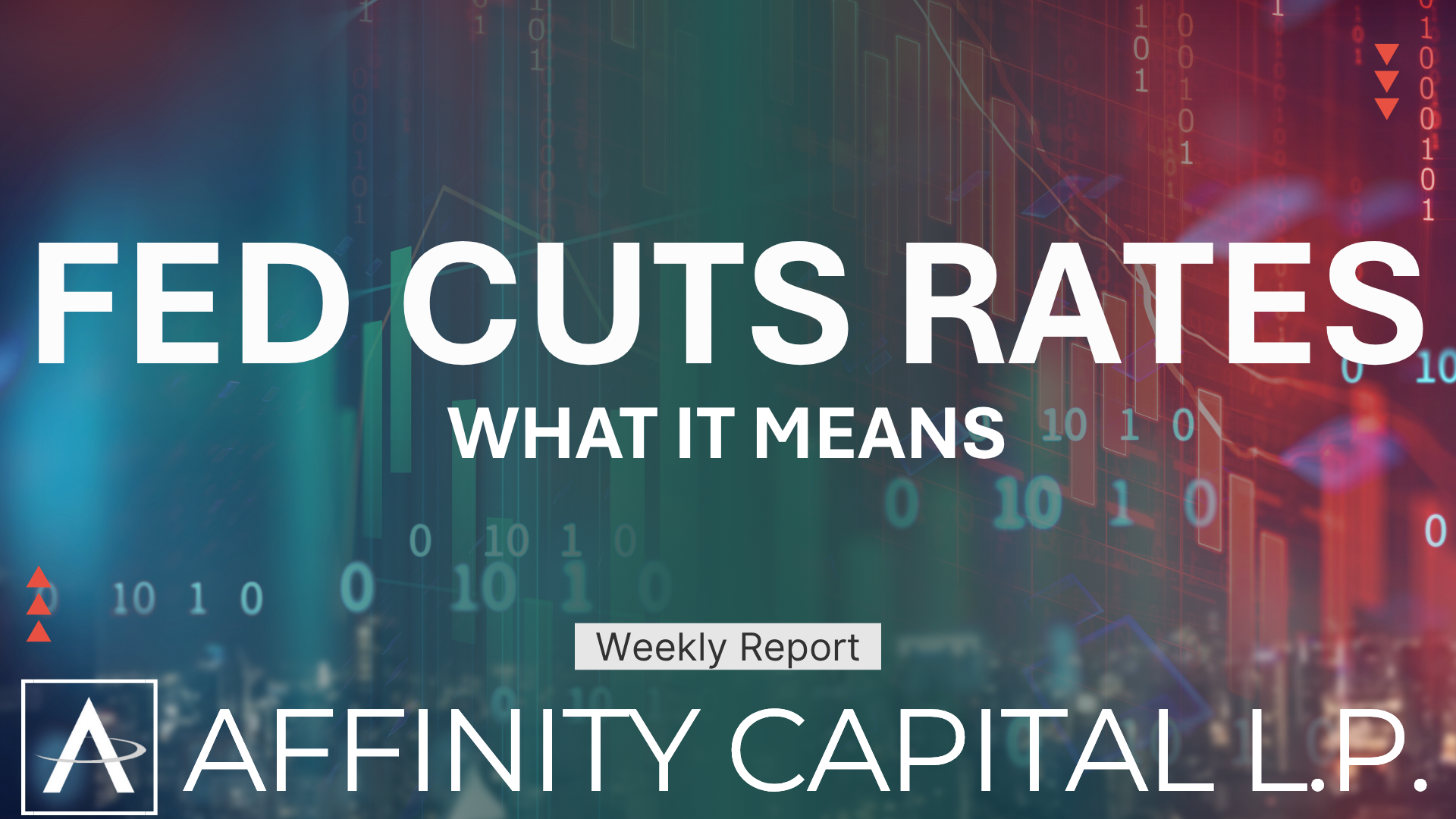Fed's Latest Move: Key Insights from Today's Rate Decision
June 12, 2024

Today, the Federal Reserve announced that it will keep the federal funds rate unchanged at 5.25% to 5.50%, maintaining its current stance amid ongoing inflation concerns. This decision marks the sixth consecutive meeting where rates have been held steady.
Key Takeaways:
- Steady Interest Rates : The decision to maintain the current rate was unanimous among FOMC members. This pause allows the Fed to assess the impact of previous rate hikes on the economy and inflation.
- Inflation and Economic Activity : Although inflation has eased from its peak, it remains above the Fed's 2% target. The Fed highlighted that economic activity continues to expand, and the labor market remains strong with low unemployment rates.
- Future Rate Hikes : Despite the pause, the Fed signaled the possibility of additional rate increases later in the year if inflation does not show sufficient signs of decline. The July meeting is considered a "live" meeting where further rate hikes could be discussed.
- Balance Sheet Adjustments : Starting in June, the Fed will slow the reduction of its holdings of U.S. Treasury securities, lowering the monthly redemption cap from $60 billion to $25 billion. This is part of its broader strategy to manage monetary policy without excessively tightening financial conditions.
- Economic Projections : The Fed adjusted its economic projections, forecasting a slightly higher GDP growth rate for 2023 and a lower average unemployment rate for the fourth quarter. This indicates a stronger-than-expected economy but also suggests that inflation may decrease more slowly than anticipated.
Implications for the Stock Market and Economy:
- Stock Market : The market response is mixed. On one hand, the pause in rate hikes provides some relief to investors, suggesting that the Fed is not overly aggressive in its tightening. On the other hand, the potential for future rate hikes could create uncertainty, potentially leading to volatility in the stock market.
- Economy : The decision to keep rates steady reflects a cautious approach by the Fed, balancing the need to control inflation without stifling economic growth. The Fed's actions suggest that while inflation remains a concern, they are mindful of the cumulative impact of previous rate hikes and the lagged effects on economic activity and employment.
Thank you for the opportunity to serve you and your family and to collaborate with you for—Wealth Management for Life!

The Federal Reserve announced today that it is cutting interest rates by a quarter of a percentage point, bringing the federal funds target range down to 3.75% to 4.00% . While it may sound like just another number, this decision carries real implications for the economy and financial markets. Why the Fed Made This Move The Fed has two primary goals: keep inflation under control and support a healthy job market. Over the last year, much of the focus has been on the first goal. Inflation has been stubborn, running higher than the Fed’s 2% target. Now, however, concerns about the job market are moving to the forefront. Hiring has slowed, and the Fed has acknowledged that risks to employment are rising. With economic data disrupted by the government shutdown, the central bank is working with incomplete information. In that uncertainty, officials chose to act in what they call a “risk management” mode, providing a bit of cushion for the economy. What This Means for the Economy Borrowing and Spending Lower rates typically filter into lower borrowing costs for businesses and households. That can mean slightly cheaper loans, credit cards, and mortgages. We have already seen mortgage rates dip in anticipation of this move, and that could provide some relief for homebuyers. Business Investment When financing is less expensive, businesses are more likely to expand, invest, and hire. The Fed hopes this cut provides enough encouragement to keep the labor market steady. The reality, however, is that a single quarter-point cut may only have a modest impact unless overall demand in the economy improves. Inflation Still in the Picture The challenge is that inflation has not gone away. By easing policy while prices are still running above target, the Fed runs the risk of letting inflation flare up again. That balancing act—supporting jobs without reigniting inflation—will be the key tension in the months ahead. Housing and Consumers The housing sector is especially sensitive to changes in interest rates. Builders and buyers often respond quickly when financing costs move even a little lower. At the same time, for households carrying debt, lower rates can make it easier to manage payments or refinance. But if wages stagnate or unemployment rises, those benefits may be limited. Markets and Volatility Markets had largely anticipated this cut, so the bigger story is what happens next. Investors are already debating whether this will be the first of several cuts, or just a one-off adjustment. That uncertainty often creates volatility in both stocks and bonds. The Bigger Picture The Fed has made it clear that there is no preset course. Officials will continue to watch the data and adjust policy as needed. That means future moves could go in either direction depending on whether inflation proves sticky or the job market weakens further. What does this mean in practical terms? It means we are entering a period where the Fed may be more reactive than proactive. Each new employment report, inflation reading, or sign of economic strength or weakness will take on outsized importance. Our Perspective For clients, the most important takeaway is that the Fed is signaling greater concern about the labor market, even as inflation remains above target. In other words, the economy is at a delicate point. The rate cut should provide some near-term relief, but it is not a magic fix. We are watching several key areas closely: The pace of hiring and unemployment trends Inflation data to see if price pressures start to ease or flare back up Housing activity, which could pick up if mortgage rates continue to drift lower The Fed’s move today is best seen as a stabilizing step. It shows policymakers are willing to provide support if needed, but it also highlights just how uncertain the path forward is. Periods like this can create noise in the markets, but they also underscore the value of staying focused on long-term goals. Our role is to keep a steady eye on developments, evaluate the implications, and make thoughtful decisions on your behalf. As always, we will continue monitoring the Fed’s actions and the broader economy, and we will keep you updated as the situation evolves.
Markets are navigating a new U.S. government shutdown, softer recent labor signals, and sliding oil while investors keep one eye on the Fed’s path after its September meeting. Equities are mixed but near highs, leadership remains tilted toward technology with improving breadth, and defensive assets like gold are seeing renewed demand. What moved today (Oct 1) : After notching strong September and Q3 gains yesterday, with the S&P 500 up about 0.4 percent on September 30 and the Dow setting another record close, U.S. stocks were choppy this morning as the shutdown began. The Nasdaq and Dow traded slightly higher intraday while the S&P hovered near flat. Overseas, the FTSE 100 hit a record as healthcare shares rallied. Gold pushed to fresh records as investors hedged against policy and data uncertainty. Current events to watch: U.S. government shutdown: With funding lapsed, key economic releases may be delayed, including Friday’s jobs report. This muddies near-term visibility for the Fed and markets. Furloughs and suspended data flows could weigh on growth in the fourth quarter if the shutdown lasts. The Fed’s recent guidance: At the September 17 meeting, the Fed’s projections suggested a lower policy path into 2026 as inflation cools, keeping the possibility of additional rate cuts alive. August PCE inflation printed at 2.7 percent year-over-year, reinforcing a gradual disinflation trend heading into the final quarter of the year. Commodities reset: Crude oil has retreated into the low $60s (WTI) on talk of potential OPEC+ supply increases and a softer global manufacturing pulse. The EIA’s outlook anticipates further price softness as inventories build into early 2026, which could provide relief for consumers and businesses. Sectors and standouts: Technology and growth: The third-quarter rally was led by large technology companies, but participation broadened across more sectors, which is healthy for the durability of the uptrend. Elevated valuations mean earnings delivery remains critical in October. Defensives and healthcare: In Europe, healthcare leadership helped drive record U.K. index levels today. In the U.S., defensive sectors have provided ballast on volatile days as bond yields eased. Energy: Lower oil prices have weighed on energy shares but should ease input costs for transportation, consumer, and industrial companies if sustained. Why this is happening: Markets are balancing two forces. On one side is a soft-landing narrative with cooling inflation, prospects for additional Fed cuts, and resilient corporate earnings. On the other side is event risk from the government shutdown, murkier global growth, and shifting oil supply expectations. As long as inflation trends continue to drift lower and policy remains supportive, dips have been bought, but when data flow is disrupted, headlines can dominate. What it could mean next: Volatility watch: With fewer data releases if reports are delayed, markets may be more sensitive to headlines. Credit spreads and market breadth are worth watching since deterioration there would be an early warning sign. Rates and policy: Fed commentary and any clarity on funding negotiations may set the tone. Markets currently lean toward additional easing by year-end, and confirmation or pushback from officials can move both equities and rate-sensitive sectors. Oil and inflation: If crude remains subdued, disinflation into year-end is supported, which is constructive for risk assets as long as growth holds up. Bottom line : Despite today’s wobble, the overall trend remains constructive but sensitive to headlines. A diversified approach, focus on quality balance sheets, and disciplined rebalancing remain prudent as we enter a period where policy developments may matter more than usual data. As always, we welcome your questions and are here to support you. At the heart of everything we do is our commitment to “Wealth Management for Life,” providing enduring guidance for you and your family’s financial success.

The big news today: the Federal Reserve cut interest rates by 25 basis points , lowering the federal funds target range to 4.00%–4.25% . This is the first rate cut since 2023, and it marks what could be the beginning of a new easing cycle. Chair Powell acknowledged that the labor market is showing signs of strain —job growth has slowed, unemployment has edged higher—while inflation, though still above target, has been gradually moderating. One member of the committee even pushed for a larger 50-point cut, underscoring the growing concern about keeping the economy on stable footing. Markets largely anticipated this move, and that helped set the tone for the week. The S&P 500 and Nasdaq hit new record highs earlier in the week , reflecting investor optimism that lower rates will support growth. Small-cap stocks also enjoyed a bounce, showing that confidence wasn’t limited to the mega-cap names. At the same time, Treasury yields fell toward 4% before inching back up, a sign that bond investors are weighing both the near-term relief of rate cuts and the longer-term risk that inflation remains sticky. Economic data released this week helped frame the Fed’s decision. August inflation readings came in a touch hotter than expected , with headline CPI up 2.9% year over year and core inflation at 3.1%. Those numbers are still above the Fed’s target, but not high enough to derail its decision to pivot toward easing. Meanwhile, energy prices moved higher on global supply concerns, giving the energy sector a lift, while technology—especially companies tied to AI—continued to outperform. Beyond the numbers, politics are adding a layer of uncertainty. Recent controversies around Fed appointments and legal challenges to sitting governors have raised questions about the central bank’s independence. Markets are watching closely to see whether these distractions influence policy direction. Globally, other central banks, including Canada’s, have also begun shifting to more accommodative stances, reinforcing the sense that the next phase of policy is easing across major economies. So what does this mean looking ahead? Markets could see more upside in the short run , especially in interest-rate sensitive areas like housing and consumer spending. But investors should also prepare for continued volatility —each new jobs or inflation report has the potential to swing sentiment quickly. If inflation proves stickier than hoped, long-term Treasury yields could rise even as short-term rates fall, a dynamic that might pressure parts of the financial sector. In short, the path ahead is unlikely to be smooth, but the Fed has signaled it is prepared to act again, with two additional cuts projected before year-end. Bottom line : The Fed has taken its first step toward easing, reflecting concerns about growth while balancing persistent inflation risks. Markets are encouraged, but optimism remains cautious as investors adjust to a more complex mix of risks and opportunities. As always, we welcome your questions and are here to support you. At the heart of everything we do is our commitment to Wealth Management for Life —providing enduring guidance for you and your family’s financial success.

